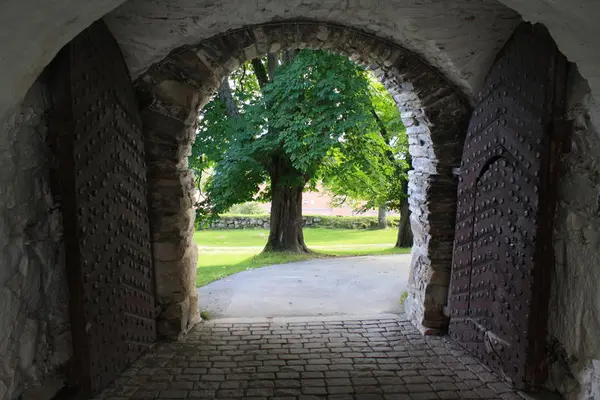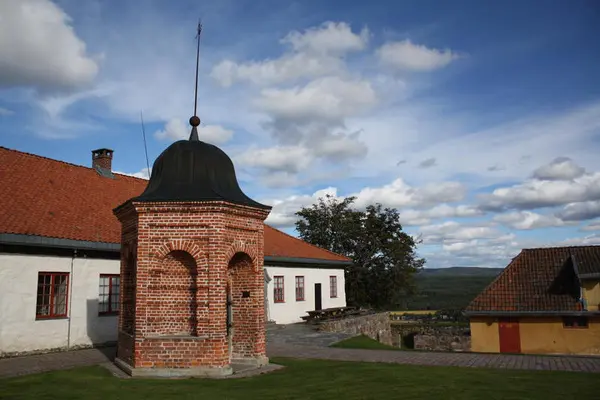Det er et av dei fagraste utsyn i landet å stå på Kongsvinger festning og sjå Glåma ned i dalen med gardar på båe sider...
No Norwegian town has more defensive structures than Kongsvinger. The fortress lies, like a golden crown, over the city. The writer Aasmund Olavsson Vinje might have known that Kongsvinger fortress is the largest monumental building in the county of Hedmark.
- 1/1
Utsikt over Glomma og Vingersjøen
Kongsvinger has always been an important hub on the border of Norway and Sweden. In the medieval Royal Sagas of Snorre Sturlason, we can read about Harold Fairhair's (often known as the first king of Norway) journey through the district in 871 A.D.
Den Wingerske Kongevei (The Royal Road of Winger) was established in the 17th Century, and passed through Kongsvinger. Today, remains of that road can be found between Rasta and Granli.
The first fortresses were established along the banks of the river Glomma. Tråstad bastion was built in 1658. When it was refurbished in 1718, Nor bastion south of Glomma was founded. Both of these bastions were important in the securing the safe passage of the ferry over Glomma.
- 1/1
Portene på Kongsvinger festning
Kongsvinger fortress got its first commander and garrison in 1682. Works on the the fortress were begun immediately. The expansion of the fortress took place over many years, and there is a one hundred years age difference between the Bakery and the New Barracks.
Outside the walls, you can find the fortress' outworks, the Skjærs bastion with Kongsvinger city's Millenial tree, and the UN monument. There are also three more bastions situated here; "Se til høyre" ("Look right"), "Prins Fredrik" ("Prince Fredrik") and "Norske Løve" ("Norwegian Lion").
King Olav V of Norway opened a separate section of the Norwegian Armed Forces Museum in the old supplies store from 1682, as part of the fortress' 300 year jubilee in 1982. The museum gives an insight into Norwegian defensive history from the Viking Age up until today, and has its own local section concentrating on the history of the Second World War from 1940 to 1945. On the first floor, you can find an exhibition concerning the Second World War border couriers which was opened by His Royal Highness Crown Prince Haakon in 2003.
- 1/1
Brønnhuset på Kongsvinger festning
The Norwegian armed forces were modernized in the early 20th Century. "Glomma-linjen" ("The Glomma line") became a new concept, a line of fortifications from Halden in the south to Elverum in the north. On Vardåsen in Kongsvinger, two new fortifications were built: Vardefortet and Gullbekkfortet. When they were opened in 1903, they were the most modern fortresses in Northern Europe. Today, the Vardefortet is partially restored.
Today, there is no military activity on Kongsvinger Fortress. The fortress area is open for visitors, and you can walk on the fortress walls, explore dark wells and the soldiers' casemates.
Only Oslo has received more royal visitors than Kongsvinger in Norway. Carl Johan, the 19th Century Swedish-Norwegian king, visited Kongsvinger and was said to have been so popular with the young ladies, they refused to wash their hands for days after having been kissed by the king.


